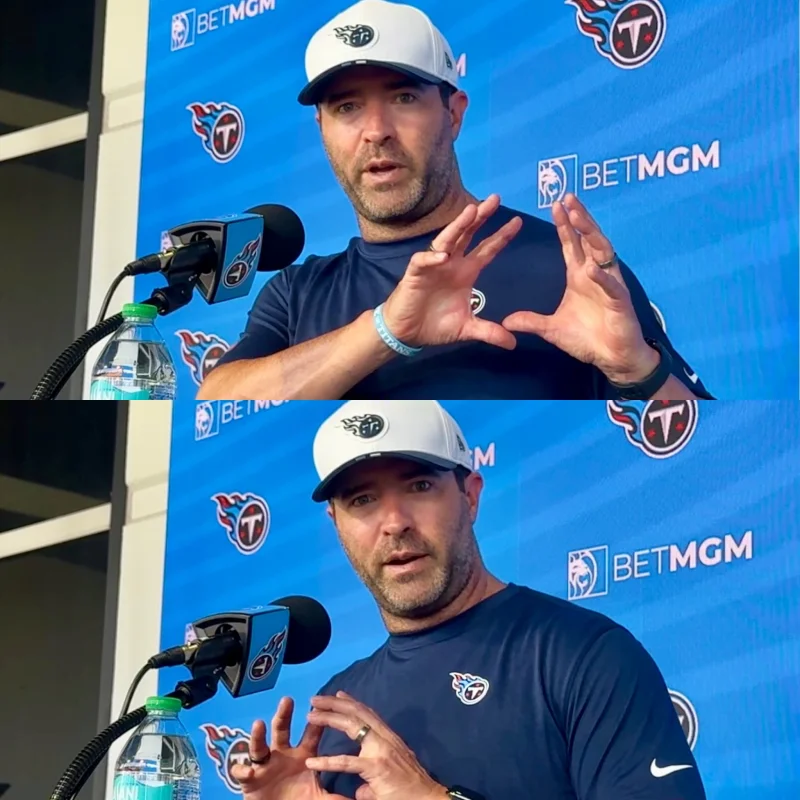NASHVILLE, Tenn. – Was that an 'A' throw?
During their film review meetings, Titans quarterbacks review every toss.
With Brian Callahan, Nick Holz and Bo Hardigree overseeing things, Cam Ward, Brandon Allen and Tim Boyle look carefully at ball placement and rate it.
Some throws are easy judgments, others borderline deliveries that might take a second to sort out.

“That essentially makes you aware of where you are placing the ball, and location is such a critical part of successful quarterback play,” Callahan said. “Making you aware of where your bad throws are, where your good throws are, and you get a chance to look at why. Why was that throw maybe off target?
“The difference between a throw here and a throw here is great (see photo below), so we’re really hard on those guys in terms of their location. They have fun with it, too. They grade each other’s throws; they have to come to an agreement, if a throw is a 'C' throw, if it’s an 'A' throw.”
Titans QBs are aware of where they are putting the ball, and they are accountable for it.
Callahan adopted the idea of grading every throw as a group from Hardegree, who had learned it from Clyde Christensen, a coach who had worked with Peyton Manning and Andrew Luck, and later coached Tom Brady.
Hardegree was the quarterback coach for the Dolphins when Christensen was the coordinator in 2016 and 2017.
Cam Ward has been largely accurate since joining the Titans as the No. 1 pick in the draft. The offense’s timing and accuracy, however, was off at the second practice of training camp. Cody Barton intercepted Ward and the linebacker should have had a second.

“It’s ball placement,” Ward said of the overall grading. “It can’t be behind him, it’s got to be at least on his chest so he can get a good enough break.
What percentage of his throws get the top mark?
“Not good enough yet,” he said.
Brandon Allen said he thinks there is 90 percent consensus on the grading of throws.
“There is always some arguing one way or another, some people fight for a higher score more than others,” he said with a grin.
Tyler Lockett on the precision mindset of #Titans’ QBs making throws. The group is grading every one. pic.twitter.com/lvRKcZsUnR
— Paul Kuharsky (@PaulKuharskyNFL) July 24, 2025
So what exactly earns an ‘A?’
“An ‘A’ throw would be what you’d call your quintessential perfect ball,” Callahan said. “Runner’s ball, if a guy's on the move it hits him, he doesn’t have to break stride, he doesn’t have to move his body, it hits him right in his hands, it’s catch, tuck and run. ‘A’ throws are probably hard to come by, naturally so and that’s a good thing. I would say most ![]() practices, you’re probably going to get a pretty high level of B throws and then you have your handful of ‘A’ throws.
practices, you’re probably going to get a pretty high level of B throws and then you have your handful of ‘A’ throws.
“I think when you look at the course of a game, quarterbacks probably have to make between eight to 10 ‘A’ throws in a game for you to convert a third down or throw a touchdown. That’s probably a reasonable expectation.”
A ‘B’ throw is in the framework, a ‘C’ throw is errant and outside the framework, a ‘D’ throw is a gross miss and an ‘F’ is an interception.
Quarterbacks can sort their throws and look at the film of a certain grade or group of grades to seek commonalities.
For receivers, things kind of flip. Want to see an ‘A’ catch? A lot of them come on a ‘C’ or a ‘D’ throw, prompting the quarterback room to say both ‘wow’ and ‘thanks.’
“It’s a symbiotic relationship,” Elic Ayomanor said, “in the essence that I’m trying to make them look as good as possible and they’re trying to make me look as good as possible.